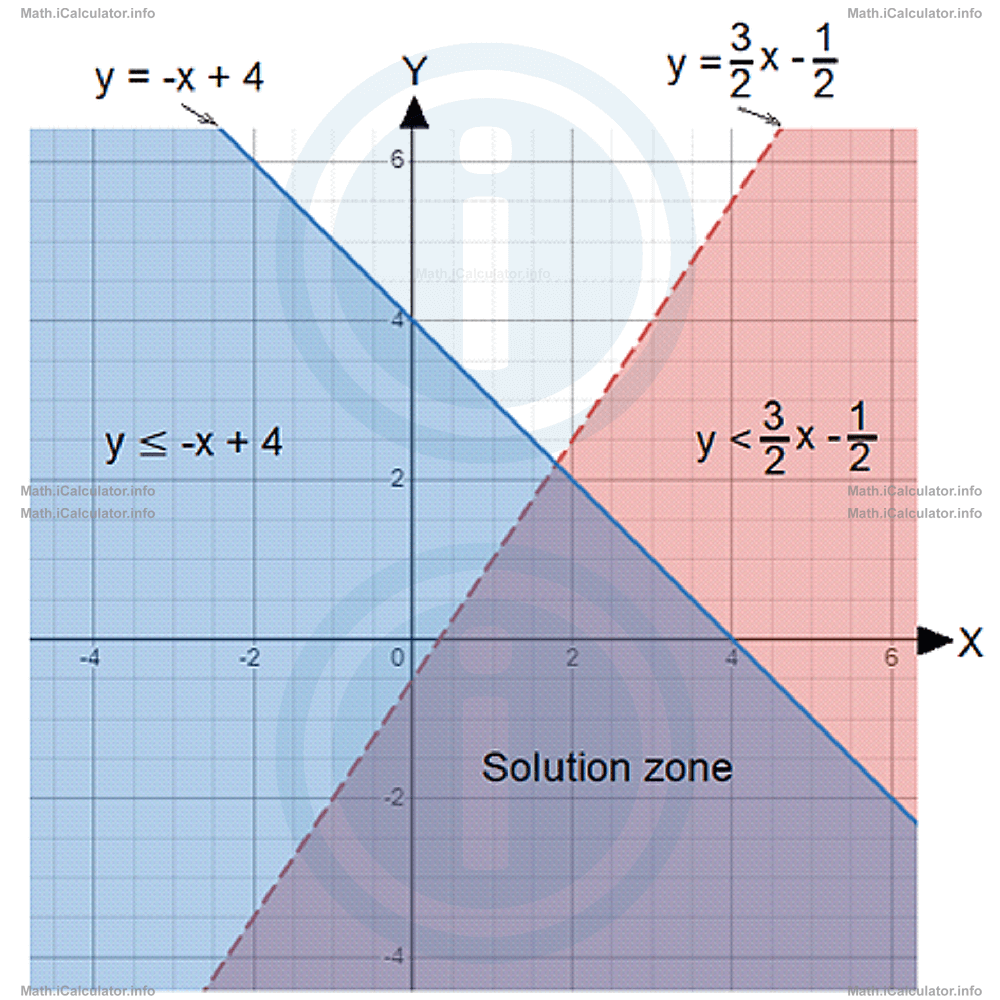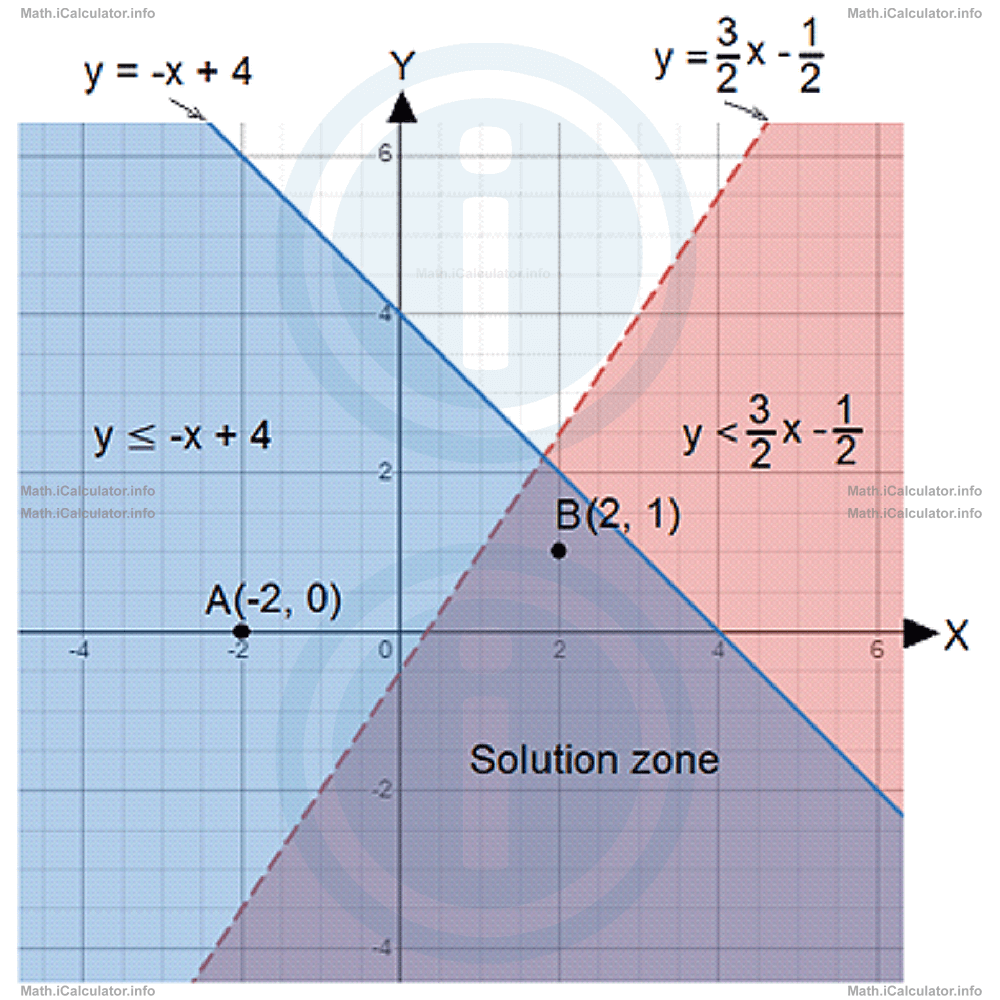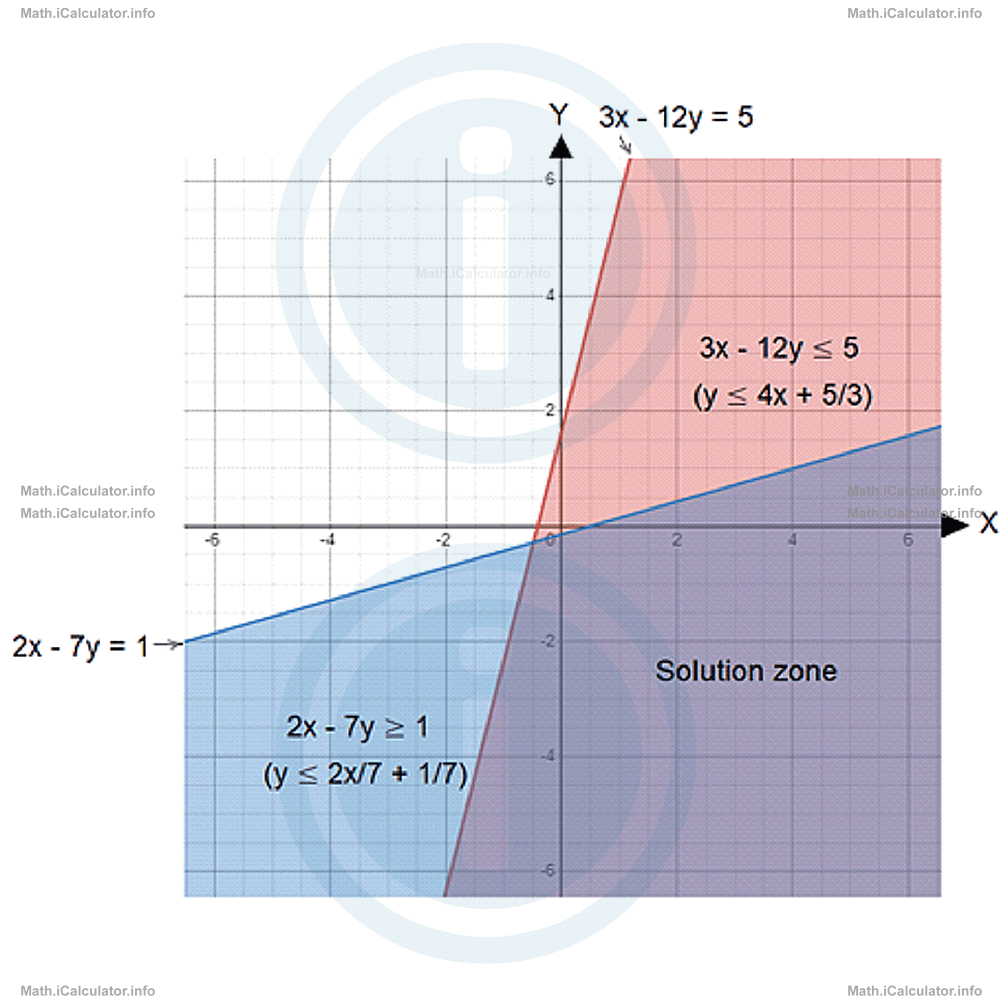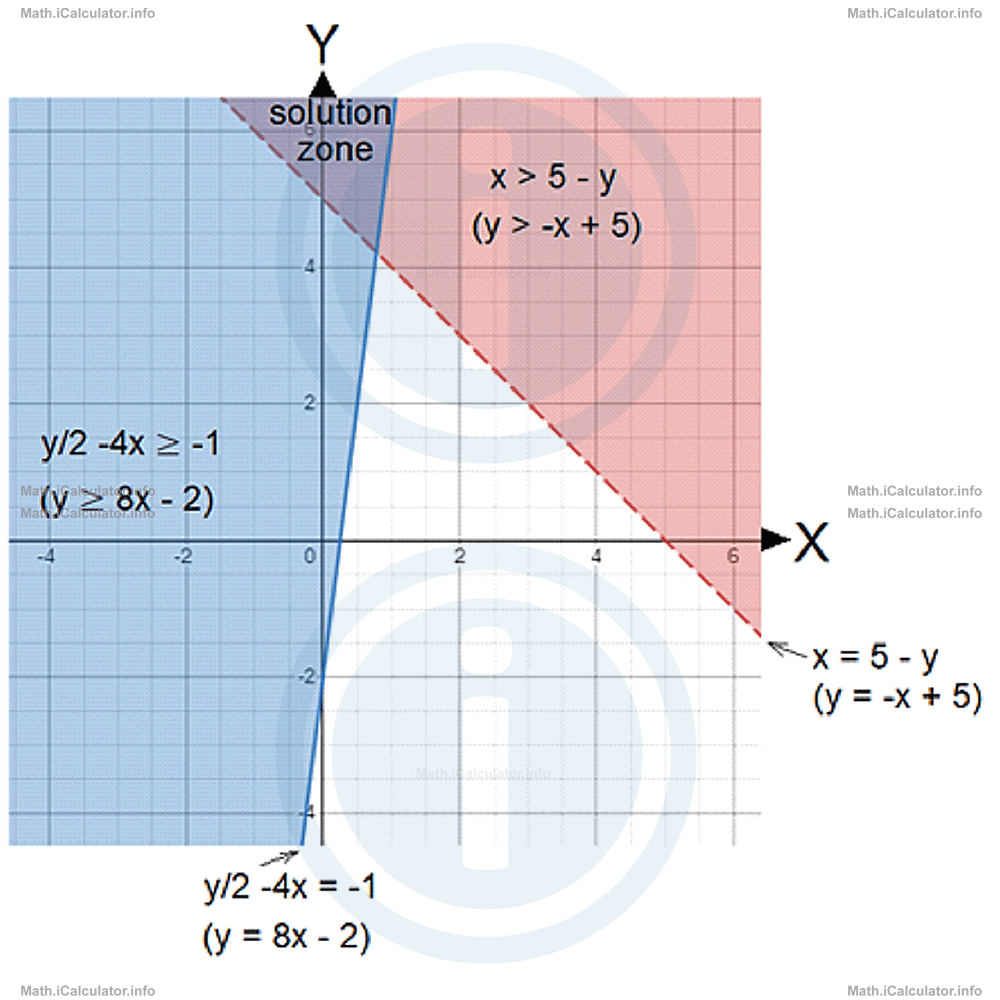Menu
Math Lesson 10.4.1 - Systems of Linear Inequalities
Please provide a rating, it takes seconds and helps us to keep this resource free for all to use
Welcome to our Math lesson on Systems of Linear Inequalities, this is the first lesson of our suite of math lessons covering the topic of Systems of Inequalities, you can find links to the other lessons within this tutorial and access additional Math learning resources below this lesson.
Systems of Linear Inequalities
Let's consider the two inequalities in the introduction section. Unfortunately, the first two (analytical) methods used for solving systems of linear equations (elimination and substitution method) cannot be used in systems of linear inequalities, as here we have to find a region of the coordinates plane XOY where both inequalities are true. This region can extend at different orientations, so it is impossible to identify all values that belong to the solution set without referring to a figure that shows the graphs of every single inequality.
Therefore, we can solve graphically the system of linear inequalities
Obviously, as in all inequalities solved in the previous tutorial, when solving such as system only graphically, we must isolate the variable y and solve each inequality in terms of the other variable x. Then, we plot the graphs of each inequality and see where the double shaded area that shows the region where both inequalities are true extends. Therefore, only the last part of the solution reminds us of the existence of a system of linear inequalities; the rest of the solution looks like solving two different exercises containing a single inequality.
However, we can still use the first two methods when checking the solution, especially when the corresponding equations form independent systems, i.e. when they have a single common point. We can check whether this point of convergence is the same as shown in the graph or not. Hence, we can write for the two inequalities in our example:
-2y > -3x + 1
-2y/-2 > -3x/-2 + 1/-2
y < 3/2 x - 1/2
and
y ≤ -x + 4
This means the solution set includes the double shaded area below the lines y = 3x/2 -1/2 (without including the line) and y = -x + 4 (including the line itself), as shown in the figure below.

Now, let's check whether points A and B in the "Introduction" section belong to the solution set or not. Let's insert points A(-2, 0) and B(2, 1) into the graph.

From the graph, it is evident that point A does not belong to the solution set of the given system of linear inequalities, as it belongs only to the solution set of y ≤ -x + 4 but not to that of y < 3x/2 -1/2. On the other hand, point B belongs to the solution set of the given system of linear inequalities, as it is inside the double shaded zone.
Let's check our graphical solution by making the numerical proof. We can take either the original inequality or the revised form used to plot the graph, as the result will not change. Thus, substituting the coordinates of point A (x = -2, y = 0) in the first inequality yields
3 ∙ (-2) - 2 ∙ 0 > 1
-6 - 0 > 1
-6 > 1 (false)
while substituting the same point in the second inequality yields
-2 + 0 ≤ 4
-2 ≤ 4 (true)
Now, let's consider the coordinates of point B (x = 2, y = 1). Thus, when substituting them in the first inequality, yields
3 ∙ 2 - 2 ∙ 1 > 1
6 + 2 > 1
8 > 1 (true)
and when substituting the coordinates of the same point in the second inequality yields
2 + 1 ≤ 4
3 ≤ 4 (true)
Therefore, only point B belongs to the solution set of the given system of inequalities, as when substituting its coordinates in the system of inequalities, makes both inequalities true.
Remark! The graphing method not only makes us solve systems of linear inequalities, but it also helps us solve easier the corresponding systems of equations when the coefficients are such that they give rational numbers as solutions. Thus, instead of finding a pair of values obtained through complicated calculations, we simply plot the graphs and see what the coordinates of the intercept point are.
Example 1
Solve the following systems of inequalities.
- 3y - 12x ≤ 52x - 7y ≥ -1
- x > 5 - y1/2 y - 4x ≥ -1
Solution 1
- First, we have to write all inequalities in the form y (?) mx + n, where (?) contains one of the four inequality symbols ( >, <, ≥ or ≤ ). It is worth to highlight the fact that we don't make this new arrangement to plot the graph line easier, as even in the actual form you can find two points that help plotting the graph. The reason why we isolate the y-variable is to identify easier the direction of the solution zone. Hence, for the first inequality, we have 3y - 12x ≤ 5This means the solution set of this inequality includes the zone below the graph line including this line as well.
3y ≤ 12x + 5
3y/3 ≤ 12x/3 + 5/3
y ≤ 4x + 5/3
As for the second inequality of the system, we have2x - 7y ≥ -1This means the solution set of this inequality includes the zone below the graph line including this line as well.
-7y ≥ -2x - 1
-7y/-7 ≥ -2x/-7 - 1/-7
y ≤ 2/7 x + 1/7
Hence, the solution set will include the common zone that lies below each graph, as shown by the double shaded zone in the figure.
- Again, we have to write all inequalities in the form y (?) mx + n, where (?) contains one of the four inequality symbols ( >, <, ≥ or ≤ ). Thus, for the first inequality, we have x > 5 - yThus, the solution set of this inequality alone includes the zone above the graph without the graph line.
x + y > 5 - y + y
x + y > 5
x + y - x > 5 - x
y > 5 - x
y> - x + 5
As for the second inequality, we have1/2 y - 4x ≥ -1Therefore, the solution set of this inequality alone includes the zone above the graph without the graph line. Hence, if considering the two graphs as forming an "X-letter" like shape, the solution zone of the system will include the upper quarter of the shape, as shown in the figure below.
2 ∙ (1/2 y - 4x) ≥ 2 ∙ (-1)
y - 8x ≥ -2
y - 8x + 8x ≥ 8x - 2
y ≥ 8x - 2
More Systems of Inequalities Lessons and Learning Resources
Whats next?
Enjoy the "Systems of Linear Inequalities" math lesson? People who liked the "Systems of Inequalities lesson found the following resources useful:
- Definition Feedback. Helps other - Leave a rating for this definition (see below)
- Inequalities Math tutorial: Systems of Inequalities. Read the Systems of Inequalities math tutorial and build your math knowledge of Inequalities
- Inequalities Video tutorial: Systems of Inequalities. Watch or listen to the Systems of Inequalities video tutorial, a useful way to help you revise when travelling to and from school/college
- Inequalities Revision Notes: Systems of Inequalities. Print the notes so you can revise the key points covered in the math tutorial for Systems of Inequalities
- Inequalities Practice Questions: Systems of Inequalities. Test and improve your knowledge of Systems of Inequalities with example questins and answers
- Check your calculations for Inequalities questions with our excellent Inequalities calculators which contain full equations and calculations clearly displayed line by line. See the Inequalities Calculators by iCalculator™ below.
- Continuing learning inequalities - read our next math tutorial: Solving Linear Inequalities
Help others Learning Math just like you
Please provide a rating, it takes seconds and helps us to keep this resource free for all to use
We hope you found this Math tutorial "Systems of Inequalities" useful. If you did it would be great if you could spare the time to rate this math tutorial (simply click on the number of stars that match your assessment of this math learning aide) and/or share on social media, this helps us identify popular tutorials and calculators and expand our free learning resources to support our users around the world have free access to expand their knowledge of math and other disciplines.